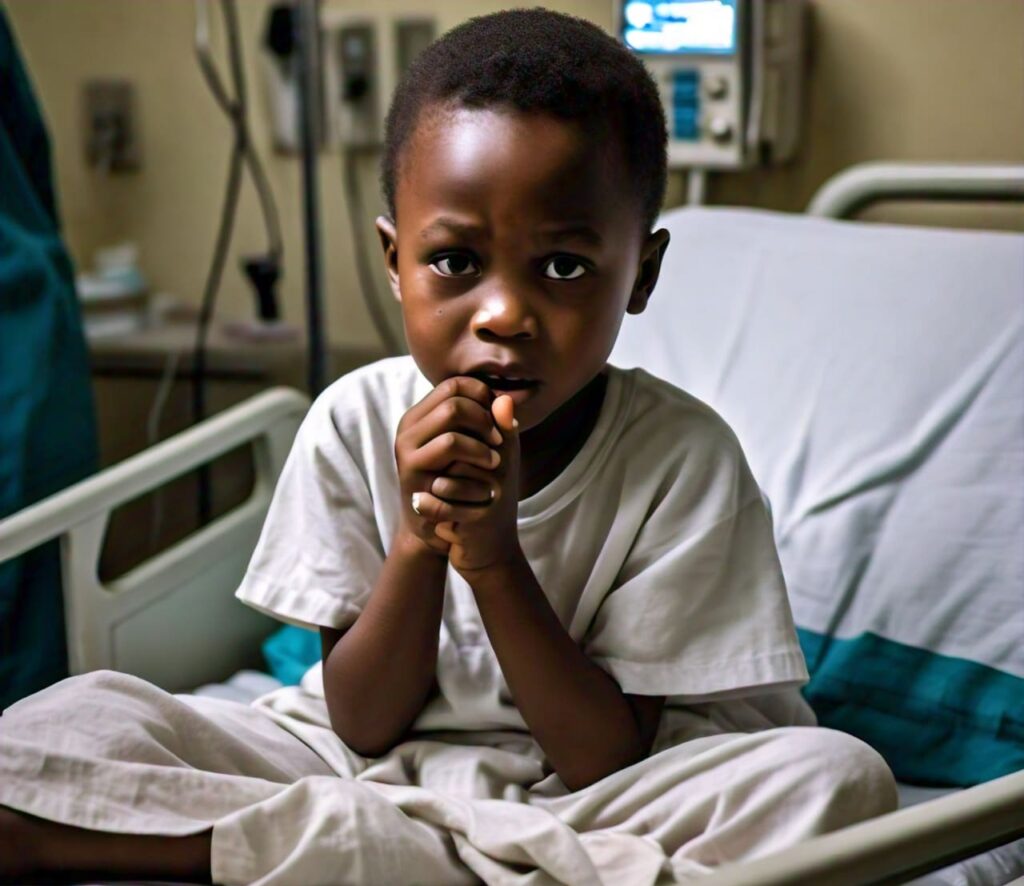Pneumonia in children is a major health concern, especially in developing countries. It is an infection that affects the lungs and causes inflammation in the tiny air sacs.

Therefore, it’s important for everyone to understand why this illness occur, how to recognize the signs, and ways to appropriately prevent them. This information can help parents and caregivers provide the best support for their children.
In this article, we explore the full scope of pneumonia in children and how it can be effectively managed.
What is Pneumonia?
Pneumonia is a respiratory infection that can be caused by bacteria, viruses, or fungi. It primarily affects the lungs, causing inflammation in the air sacs, which may become filled with pus, leading to difficulty in breathing
This inflammation can lead to the sacs filling with fluid or pus, making it difficult to breathe and reduced oxygen flow to the bloodstream, thereby increasing the risk of serious health complications.
- Types of Pneumonia
- Bacterial Pneumonia: Caused by bacteria such as Streptococcus pneumoniae. Often more severe and requires antibiotics.
- Viral Pneumonia: Commonly caused by viruses like the respiratory syncytial virus (RSV) or the influenza virus.
- Fungal Pneumonia: Less common, but can occur in children with weakened immune systems.
Causes of Pneumonia in Children
Children are vulnerable to pneumonia due to their developing immune systems. Factors that increase the risk of contracting pneumonia include:
- Malnutrition
- Poor sanitation and crowded living conditions
- Exposure to tobacco smoke
- Pre-existing conditions such as asthma or cystic fibrosis
- Incomplete vaccination history
Symptoms of Pneumonia in Children
Symptoms of pneumonia can vary depending on the type of infection but typically include:
- Cough (with mucus or phlegm)
- Fever
- Rapid or labored breathing
- Chest pain
- Fatigue
- Loss of appetite
- Wheezing (more common in viral pneumonia)
Complications of Pneumonia
If untreated, pneumonia can lead to severe complications:
- Pleural effusion (fluid accumulation around the lungs)
- Respiratory failure
- Septicemia (blood infection)
- Lung abscesses
Diagnosis
Pneumonia is diagnosed through a combination of clinical evaluations, chest X-rays, blood tests, and sputum cultures. Early diagnosis is critical to prevent complications.
Treatment of Pneumonia in Children
Treatment depends on the cause of the pneumonia:
- Bacterial pneumonia: Antibiotics such as amoxicillin are commonly prescribed.
- Viral pneumonia: Most cases are mild and can resolve with supportive care, including rest, fluids, and fever reducers.
- Hospitalization: Severe cases may require hospitalization, especially if the child experiences difficulty breathing or has a weakened immune system.
Preventing Pneumonia in Children
Prevention is key to reducing the burden of pneumonia:
- Vaccination: Immunization against Streptococcus pneumoniae, Haemophilus influenzae type B (Hib), and influenza can significantly lower the risk.
- Good hygiene: Regular handwashing and proper sanitation help prevent the spread of infection.
- Healthy nutrition: A well-balanced diet strengthens the immune system, making it easier for children to fight off infections.
- Avoiding tobacco smoke exposure: Keeping children away from smoke reduces respiratory irritants that can lead to pneumonia.
Pneumonia and Global Health: The Nigerian Perspective
Pneumonia remains a significant public health concern in Nigeria and other developing countries. The World Health Organization (WHO) estimates that pneumonia accounts for approximately 15% of all deaths in children under 5 years old globally. In Nigeria, poor access to healthcare, low vaccination rates, and malnutrition are contributing factors to the high incidence of childhood pneumonia.
Efforts by health organizations and the government to improve vaccination coverage and promote hygiene practices are critical steps toward reducing the impact of pneumonia.
Conclusion
Pneumonia is a preventable and treatable disease that poses a serious health risk to children, particularly in developing regions.
We can surely significantly reduce serious health complications and fatalities associated with this illness by identifying pneumonia symptoms early, seeking appropriate medical care, and taking preventive measures such as vaccination



